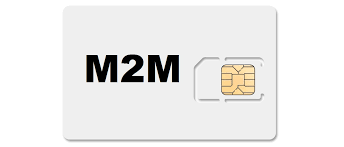Whilst the tracking of assets remains crucial, smart transport networks are now delivering substantial benefits to passengers, operators, and local authorities. Urban services are becoming more efficient, effective, and safe.
End-to-end solutions within the industry leverage advanced technologies like 4G routers and cameras. Tracking systems for trams, buses, and trains are becoming more sophisticated, accurately estimating and advertising arrival times while factoring in potential delays. These solutions often rely on 4G data SIMs, some with a fixed IP or delivered via a secure Private APN.
Warehouses are increasingly adopting these solutions not only to stay competitive but also to realise significant benefits in terms of manpower savings and cost reductions. The advent of 5G is further empowering companies, even in rural locations, to adopt new technologies that streamline and enhance workflow tracking.
What do MSPs need from suppliers in this sector?
In serving the evolving needs of the transport and logistics sector, resellers and Managed Service Providers (MSPs) need to offer choice and control. A wholesale supplier with a diverse range of connectivity options, from single to multi-network to Fixed IP, is essential. Many MSPs have established robust relationships within this sector, understanding the challenges faced and proposing customised solutions.
End-users require continuous connectivity and control over their data usage to prevent data overage charges. Jola’s partners play a crucial role in managing global SIM estates through Mobile Manager, providing real-time data usage insights, alerts bolt-ons, and data pools. These tools enable efficient monitoring of usage, preventing bill shock. Additionally, the use of mobile data networks expedites start-up processes, eliminating delays associated with lengthy fixed-line installations.
What are the key challenges for MSPs in this market?
Service providers, without the assistance of an intelligent aggregator, encounter several challenges in the 4G landscape. Firstly, varying network strengths in specific locations necessitate relationships with multiple network providers. Secondly, the absence of data usage tracking leaves devices susceptible to high overage charges when exceeding monthly allowances. Thirdly, there is a crucial need for a secure channel for transmitting financial data.
Cost-effective multi-network SIMs, coupled with an online ordering and management portal, address these challenges. Portals which facilitate data usage tracking, enable the setup of usage alerts, and allow for the retroactive application of bolt-ons ensure data costs are controlled. Data pools provide the flexibility of sharing data across multiple SIMs, while buffer pools eliminate high data overage charges. Furthermore, the utilisation of Private APN networks enhances security by facilitating the encrypted transmission of data across a private mobile network.








